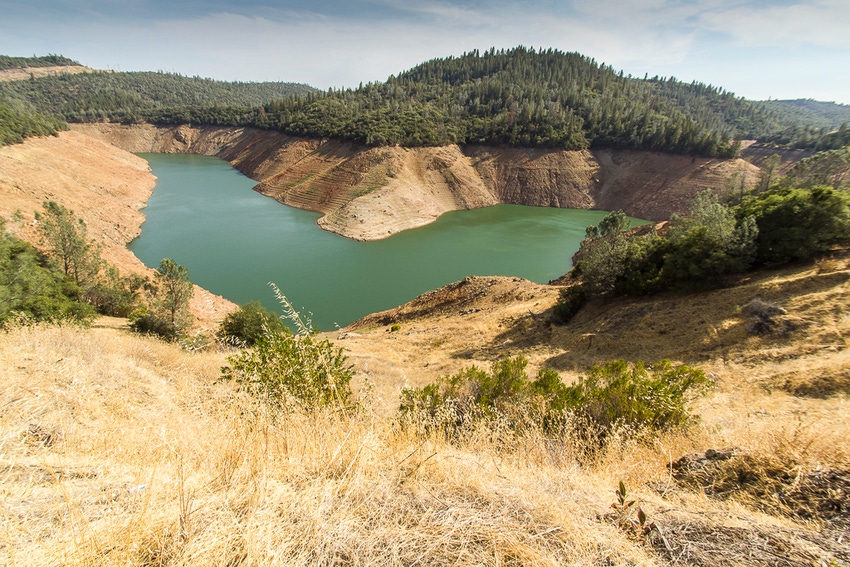
How far will 5.23 million acre feet of water go in California? You could irrigate the state’s entire almond crop without pumping a drop of groundwater; or provide the 29 State Water Project (SWP) contractors – a third of this water goes for agricultural users – with more than a years’ worth of water.
One could also fill Shasta Lake (4.5 million acre feet) and 19 percent of Lake Oroville, or fill Lake Oroville (3.53 million acre feet) and one-third of Shasta Lake. The worst option would be to waste it and let it flow into the Pacific Ocean.
The recent announcement that California State Water Project (SWP) contractors could receive 15 percent of requested supplies if no more rain or snow falls this winter makes one wonder how much higher the initial allocation could have been if 5.2 million acre feet of water not been released down the main spillway at Lake Oroville last winter.
By comparison, each of the three next-highest water years – 1997, 1983 and 1969 – saw a little more than two million acre feet released from Oroville Dam. At no other time in history were Oroville Dam and its spillway so tested.
This doesn’t count water that free flowed over the emergency spillway at Oroville Dam in early February, sending 200,000 people scrambling for higher ground as officials feared catastrophic failure.
Sure, some of the 5.2 million acre feet of water likely wound up in aquifers as the Feather River overflowed its banks, flooding areas that allowed for percolation, but suffice to say most of that fresh water eventually became salt water as it passed under the Golden Gate Bridge.
Mike Wade, executive director of the California Farm Water Coalition, said the Dec. 1 preliminary estimate by the California Department of Water Resources is a fair indication of what officials think of the season yet to come, particularly as Lake Oroville – the main SWP facility – is at a fraction of desired storage for this time of year due to repairs to the broken main spillway on the dam.
Today, Lake Oroville holds about 35 percent of its 3.5 million-acre-foot capacity. Depending on how winter progresses over the Feather River watershed that could either be fortuitous in hindsight or unfortunate if we return to drought conditions.
Here’s a few more amazing numbers related to Lake Oroville from the Department of Water Resources.
Feb. 6-7: Lake elevation rises 12 feet in a single day, or about 157,000 acre feet, as inflows from the Feather River exceed 100,000 cubic feet per second (CFS).
Feb. 7: Main spillway fails.
Feb. 8: 178,777 acre feet of water are added to the reservoir as the lake continues to rise more than 10 feet per day, closing fast on the 900-foot elevation of the emergency spillway.
Feb. 9: Lake levels rise another 12 feet, as 240,000 acre feet of water is added to the reservoir. Daily inflows to the lake exceed 155,000 CFS. Outflow at this time is about 30,000 CFS as officials limit outflows and consider how to handle the growing chasm in the main spillway.
Feb. 11, the lake overflows its emergency spillway and 200,000 people are ordered to immediately evacuate as officials fear the emergency spillway would fail.
This is just one example of how failure to maintain our water infrastructure can have catastrophic impacts, and why California with its 40 million people should immediately build more water storage and improve the ability to convey it where needed.
What if instead of losing all that water to the ocean we could have stored it elsewhere for groundwater recharge and irrigation?
About the Author(s)
You May Also Like






